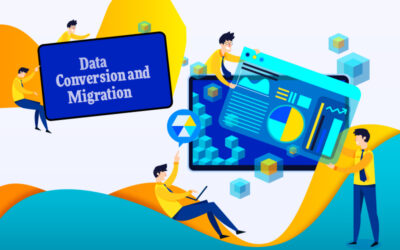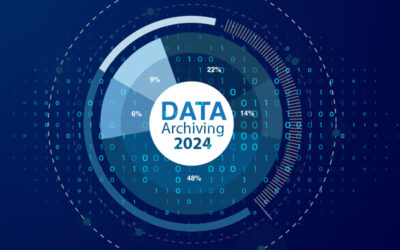Today banks, credit unions, lenders and other financial entities are working hard to adapt to a fully data-driven approach to grow their business and enhance their services. As customers increase, it naturally affects the services in an organization. Transformation of bank data into digital format with the assistance of data conversion services helps to process, monitor and evaluate data such as personal data, security information and so on. It helps to minimize the time taken to process payments, ensures a better customer service experience, and helps financial services streamline their processes and organize their work. It also improves overall performance and profitability, thus thrusting the organization further into the growth cycle.
Although digitization has taken over almost all industries, financial services still struggle with turning raw data into valuable actionable data. They have only gradually started to personalize their products and drive innovation. Some of the financial institutions still use their data like they did two decades ago. This is not advisable, especially in this age of Big Data and strategic data analytics. With regard to using data in the right manner, many of these institutions do not know how to start or where to start from. Usually every financial institution has IT organization with a data warehouse or data lake. This improves access to the data and eases development of reports. However, institutions lack resources to transform data into actionable insights, enabling creation of better products and customer experience. In order to gain a competitive edge, they may seek the assistance of a reliable vendor who promises a great solution. But then, the management may be hesitant to release customer data since the vendor will store it off-premises where the institution has no control over it. Some institutions work with vendors that are able to solve some of their problems but they are unable to find the answers to any request beyond the features already provided. And so, many financial organizations remain stuck with lots of data with no constructive use for it. So here are some key changes that these institutions could use to leverage data and find creative solutions.
- Greater value comes with collaborations: What hinders the right use of data is lack of technology. To address this problem, institutions can collaborate with fintechs. If financial institutions attempt to build data categorization and enrichment engines in-house, they may not be making optimal use of their limited resources. So, the better option is to partner with an outside agency. To ensure productive collaboration the value between the financial institution and the Fintech has to be identified and delivered against. Product or solution development tasks can be entrusted to the subject matter expert. Labor-intensive tasks such as cleaning up and categorizing the data that are best done by specialized fintechs can be entrusted to them. This will minimize the burden of the financial institution’s experts and leave them free to work on creating better value.
- Using collective intelligence to innovate: Do not consider Fintech companies as mere service providers but consider them as innovation partners. Some of the important factors in a market are evolving consumer behaviour, technological disruption, and a growing number of new players. One way relationship with firms is not the right choice. So include fintech partners in the conversations and allow them to explore new perspectives and opportunities to innovate faster. This will need a separate set of workforce to work on issues that matter to the institution. Small institutions may not be able to afford the luxury of a whole new ecosystem. But that does not mean institutions should restrict themselves from addressing complex problems with fresh perspectives via fintech partners.
- Cooperation with a sense of control: Financial institutions are concerned that engaging with fintechs would lead to losing control over data market share. Yes, they may lose control over their data if the institution has neither strategic decision nor any vision of how new technology can help in achieving organization goals. Partnering with Fintech companies would help to meet the goals better and ensure good delivery of results. Engaging in partnerships means trusting an external expert and with strategic planning financial institutions can capitalize here.
Apart from the above-mentioned changes, here are some other considerations to ensure a data-driven approach:
- First think about your use cases and then about the required technology. Once these two are ready then build your data-driven model around your business purpose.
- Create a value realization unit to support overall strategy and identify use cases and prioritize a roadmap.
- Make sure that the agile approach is aligned with overall strategy. As per technology’s perspective, the design authority needs to ensure that all architectural building blocks are created consistently with the bank’s future and target data technology vision.
- Change your organization model around the use cases and implement these use cases as the drive for transforming internally.
- When developing intelligent data platform capabilities, it is best to be use-case-driven.
Why Financial Institutions Should Be Data-driven
- Improve customer experience and drive growth
- Offer personalized service based on customer profile, their buying preferences, demographics etc. These insights help you tailor products and services according to the customer’s desire.
- Provide robo advisor service to help customers with their investment decisions. It can also manage portfolios without human influence. It makes decisions based on investment decisions on algorithms developed from customer risk profiles.
- Provide chatbots that address customer needs and inquiries, provide predictive messages and behavior insights, and automate tasks such as money transfers or balance inquiries. Chatbots also collect behavioral data on users and learn the appropriate replies to user requests over time.
- Optimize business risk and outcomes:
- It provides early warnings predictions using liability analysis to find out potential exposures prior to default. You can also work with customers to manage liabilities and limit bank exposure.
- To reduce delinquencies, credit card issuers can use account pattern-recognition technologies and develop contact guidelines and strategies for delinquent accounts.
- It can predict risk of loan delinquency and recommend hands-on maintenance strategies by segmenting delinquent borrowers and identifying self-cure customers. With this insight, banks can tailor collection strategies and improve on-time payment rates.
- It can detect financial crimes like fraud and money laundering, and counteract terrorism by identifying transaction anomalies or suspicious activities using transactional, customer blacklist and geospatial data.
- Automate business process:
- Algorithmic trading is based on deep learning, high-performance computing, and geographical positioning that can provide subsecond timing advantages in automated trading.
- Customer complaint management uses data from different channels of interaction to understand and analyze why customers complain, identify dissatisfied customers, find the root cause of the problems, and quickly respond to affected customers.
- Customer credit risk evaluation uses application and customer data for automated real-time credit decisions on the basis of information like age, income, address, guarantor, loan size, job experience, rating, and transaction history.
- Enquiry response employs data from customer engagement channels to automatically route and respond to inquiries while spending fewer resources on manual tasks.
The use of the right technology, team and partnership can provide executives with the road map to banking innovation and success of the company. For any financial organization to undergo digital transformation, first it should convert all data into digital format. Partnering with a reliable data conversion company is an easy and affordable way to replace paper files with a digital archive and it is being used all over the world in all industries and sectors.




